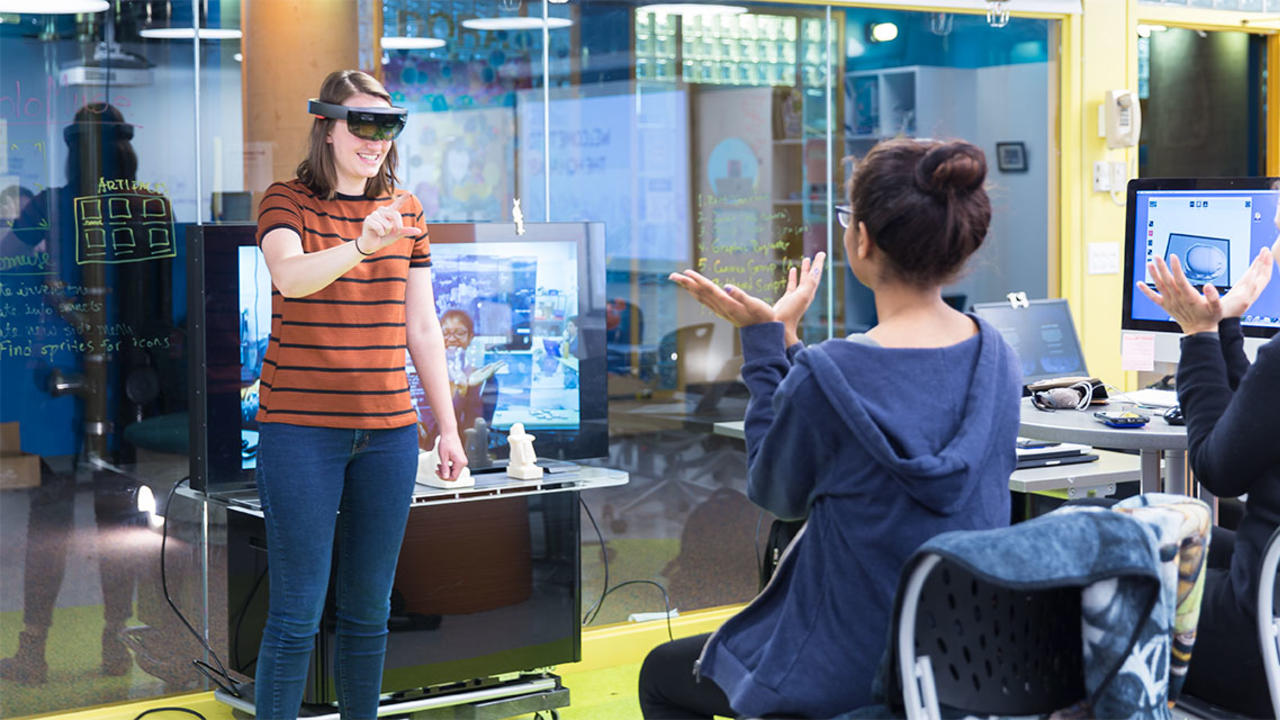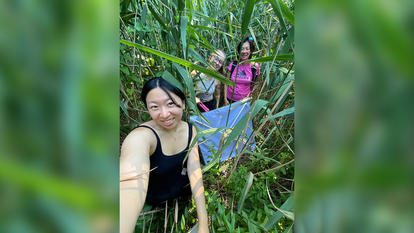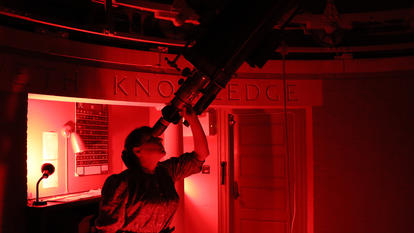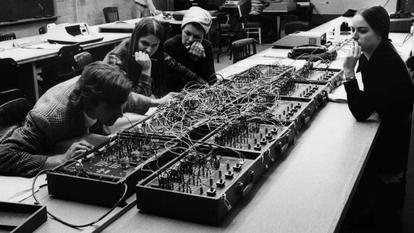HoloMuse, a Wellesley-Developed App, Brings the Museum into the Classroom

Imagine you are an archeology student at Wellesley and your professor is describing an artifact housed in the British Museum, thousands of miles away in London. What if you could grasp the object, pick it up, and look it over? Thanks to HoloMuse, a new application developed by Orit Shaer and her team in Wellesley’s Human Computer Interaction Laboratory, students can do that—virtually, at least.
Shaer, the Class of 1966 Associate Professor of Computer Science, and Christina Pollalis ’16, Whitney Fahnbulleh ’17, Jasmine Davis ’17, and Bella Virgilio ’20, with support from Jordan Tynes (LTS), are working with the Microsoft HoloLens—wearable computing equipment that fits around the user’s head like oversized sunglasses and projects a 3-D hologram into the physical environment. Using hand gestures, the wearer can grasp a holographic “object” and rotate it or turn it upside down.
“The HoloMuse application runs on the HoloLens platform, and allows students to engage with archaeological artifacts and art from a museum collection in ways that are otherwise not possible,” said Shaer. “Imagine that after viewing original artifacts in the museum—sculptures that could weigh hundreds of pounds—you could pick up a hologram of an artifact and continue to explore it physically, flipping it and rotating it, inspecting it from different angles.”
Museums such as the British Museum provide 3-D models of artifacts online that Shaer’s team uploads (anyone can access these sites). The technology is particularly relevant for disciplines that use physical artifacts, including anthropology, archeology, art history, classics, and museum studies.
Elizabeth Minor ’03, Mellon Postdoctoral Fellow in Anthropology at Wellesley, said this approach is a major pillar of object-based learning. She has used the HoloMuse application in her course From Glyphs to Bytes: Ancient Egypt and the Future of Digital Humanities.
“As an archaeologist, I use digital representation of artifacts and sites for teaching and research,” she said. “Emerging technologies like augmented reality and 3-D printing offer exciting new ways to bring ancient material into the classroom, from every corner of the world,” said Minor.
Amanda Gilvin, assistant curator at the Davis Museum, is working with Shaer and her team to explore how HoloMuse could be used in museum galleries, beginning with the Davis’ African galleries. For example, the application could allow a visitor studying a mask from the Ivory Coast in the gallery to virtually access a video of the mask being worn during a dance.
“It’s still in development, but we are excited about the possibilities,” said Gilvin.



